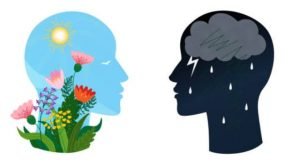
by admin | May 29, 2022 | Health
Journaling 1: Benefits of Journaling and Why You Need It.
A Better Life Through Writing
“Writing is, without dispute, the best facilitator for thinking, reading, learning, understanding, and generating ideas we have.”
-Sönke Ahrens
Everybody writes. This is most prominent in school. Your teacher, your fellow students, all of them write. Having said that, this isn’t the type of writing we’re going to be talking about. Somehow, we tend to think of writing as something tedious and an act we associate with homework, chores, and unpleasant things. Like an essay on an incredibly boring topic with a looming deadline that you have to meet.
Writing does not automatically mean writing papers or assignments. It can be a profoundly intimate act used for your self-development. Sometimes, it just means thinking. The act of writing is used to save something for future use, to solve problems, or to think about issues deliberately and mindfully. It’s a mental organization. But that’s writing in general. In today’s article, we’ll talk about one very specific form of writing – Journaling.
So What Is Journaling, Exactly?
Journaling is the act of capturing thoughts, events, ideas and is a great way to help yourself in a plethora of ways. Journaling can and will:
Relieve Anxiety

Your anxieties and fears are born and live in your head.
But that doesn’t necessarily mean you can’t place some boundaries between you and them and gently evict them on paper, and let them live there instead. After all, there’s only so much space in your head, and if you have an unwanted tenant that keeps giving you problems, there’s less room for the cool tenants, the ones you like to hang out with, and the ones that put a smile on your face.
The simple act of writing down something that gives you anxiety is a way of limiting the power it has over you.
You give it a frame, and you give it boundaries, so it can no longer blow itself out of proportion and fill out all the available space in your head. It has a place now, a beginning, and an end. Now, you’re free to think about how to solve it.
And when it’s there sitting on paper, it doesn’t look that intimidating after all.
It looks solvable. When you just can’t seem to get something off of your mind, try writing it down in a notebook and see for yourself.
Progress Tracking

Journaling can help you keep track of your progress in any given endeavor and moves you closer to your goals. They say ”What doesn’t get measured, doesn’t get managed” and while there are some exceptions to this, it’s mostly true. When you have a goal that you want to achieve, it’s easy to get stuck in loops inside your head where you’re just deluding yourself and mimicking progress. When you write things down, it gives you a blow-by-blow account of your true development.
Are you really moving closer towards the finish line? What did you do today that got you closer to your goal? Maybe you did something that derailed you from your mission, and that’s ok too, but writing it down will help you not repeat the same mistake again. It’s on paper now. It’s official! Thinking is unreliable and fleeting, words on paper stay.
Gathering Insight

Humans like patterns. We are creatures dictated by habit and the path of least resistance. Once you give journaling a try and dedicate yourself to doing it for a few days, you might discover insights about yourself and your behavior that have been eluding you. We lie to ourselves all the time, and sometimes, we don’t want to admit it.
However, putting pen to paper gives you a safe place to explore yourself and reflect on things about yourself you maybe don’t want to talk about or even don’t understand. Writing could be a fun journey into self-exploration. Do you know how much time you’re spending daily and on what?
Try writing down everything you do in a given day and how much time you’re spending on it. As Princeton University Psychologist Daniel Kahneman points out in his bestseller ‘’Thinking Fast and Thinking Slow’’ – Humans are not very good intuitive statisticians.
When you study how you utilize your time through journaling, you’re no longer guessing. Most probably, you’re going to see some uncomfortable truths on there. For example, you may be greatly overexaggerating how much time you’re spending on productive tasks and watering down how much time you’re really spending on social media, daydreaming, breaks, and so on.
How To Journal
Now, with all of this in mind, most of you reading this may come to quickly reach the point of grabbing the pen and paper. Before you start journaling however, allow us to give you some actionable tips!
Stop overthinking

It doesn’t have to be perfect. This isn’t a competition or a showcase of any sort. Stop being your harshest critic. Just trust the process. Everything else will come. Especially nowadays, we’re predisposed to expect some kind of instant reward and gratification for everything we do, but most benefits of journaling come with the long-term commitment.
So, stop overanalyzing and just write. Your journal is a deeply personal document, and no one will be looking at it. You owe it to yourself, to be honest, and it’s important not to be overly critical of your writings. Just start pouring your mind on paper.
Don’t Force The Outcome
As mentioned, your wiring for instant gratification and some sort of outcome will be breathing down your neck. The trick is to enter a state of flow and let your feelings, anxieties, and ideas pour down and be released from your head onto the page. Do journaling just for the sake of doing it – Don’t try to force and don’t even focus on the outcome. Just focus on the task at hand, pun intended!
Find What Works For You
There are plenty of different methods and tools you can utilize for journaling. The most basic would be a dedicated notebook, some people prefer typing on a computer, and others like to record their thoughts on voice memos. It doesn’t matter, don’t get hyper-fixated on what method you’re going to use.
You can always switch, and you can keep experimenting until you find what gets the job done for you.
Conclusion
Writing and journaling are acts used for deliberate thinking. It’s not something reserved for aristocrats or 20th-century writers gently lit by candlelight. Use writing to think. Use journaling to get to know yourself, develop habits, negate anxieties and track progress. Most importantly, focus on the process, not the outcome. Like everything, the outcome is a byproduct of consistency and process.
So, get to writing, will ya?

by admin | May 28, 2022 | Fitness
Is Fitness Just A Big Fad?
The Revolution Of Trainees If you’ve been following along with the trends over the past few years, you may be wondering if fitness is just a fad. Everywhere you look there are people talking about getting fit, and it can feel like an overwhelming and sometimes impossible task. Even more so, right now there are more people than ever, training in the gym or other places!
So is there something to this global awareness of fitness, or is it just another fad? Is it worth investing your time and energy into training, eating well, and recovering?
In this article, we’ll answer just that, but let’s start with the fundamentals!
We, As A Species

If we go beyond fitness trends, protein & pre-workout powders, and fitness clothing brands and dive under the human skin, we’ll find something amazing. Beneath all the layers of the fitness industry that may make the fitness lifestyle seem unattractive, there is something this industry is entirely based on… Us.
Under our skin, we have a community of trillions of cells, that form different systems, all of which have one single goal – To help us move, thrive, and survive. And frankly, moving is the primary, most natural thing that our species has been doing for hundreds and thousands of years. Because of the multiple environments our species has endured, we’ve developed various types of tissues and mechanisms.
We can run for hours on end, but we can also do short, power-burst activities like sprints. All in all, each and every one of us have 24/7 access to a complex biological machine that is not just functional, but also amazingly beautiful.
Big City Life

Now, our species has been alive for quite some time, and as we said, for the most part, humans have lived to survive, in various environments. Nowadays, however, this is completely taken away from us – We live in big cities that don’t require nearly as much movement to meet basic survival needs like eating and drinking water.
Besides, most of our food products are highly processed, containing a variety of health-harming substances. With all of this in mind, it is fair to say that though very convenient, the current lifestyle most of us lead, robs us of our natural fitness. And really, as we’ve mentioned before, fitness is something natural, that we’re all supposed to have and enjoy.
The Global Awareness
Now, we may not really consciously consider all of these factors, because the comfort zone is, well, really comfortable! However, the body is not the mind and the mind is not the body. The human body, as a separate entity (or a community as we called it), KNOWS that it has to move and that the conscious mind it’s ruled by has to take care of it!
This is perhaps why many of us often get the urge to do some kind of training activity, start a new diet or even completely overhaul our lifestyle. More often than not, however, those tend to be unsustainable and we fall back into the same patterns. Nevertheless, those who do find the way to make fitness habits sustainable, will reap enormous benefits, including but not limited to:
- Improving physical health
- Becoming more capable in daily life
- Powerboost mental health
- Enjoy life to its fullest extent
- Look better naked.
This is why fitness is a big thing – It has too many benefits and it’d be a huge miss-out to NOT do it. Because after all, everything in life stems from mental and physical health, and fitness is just helping you take care of those!
Final Thoughts
It would be naive to think that fitness is just a fad and will eventually go away. The truth is, people have been striving for physical perfection since the beginning of time. And as long as there are regular people who want to better themselves physically, mentally and emotionally, fitness will always be in demand.
So if you’re on the fence about whether or not to start working out, we say go for it! The benefits are well worth the effort, and you may find that you enjoy it more than you thought possible.
So what are you waiting for? Get started today!

by admin | May 27, 2022 | Fitness
Is Cardio a waste of time or a useful tool?
Since the dawn of the fitness industry, cardio has been used by bodybuilders and novices to achieve one goal – decrease body fat percentage. It is not a secret that many athletes want that six-pack and the first thing that is associated with nice-looking abdominal muscles is cardio…
However, is cardio really that useful for dropping these extra kilos or is it just a waste of time? Well, today we are going to find that out, but first…
What is the price of cardio?
Though cardio may offer a variety of benefits that can help us get closer to the ultimate goal of burning extra calories and losing weight, there are hidden costs to it… So let’s have a look at those!
Cardio is time-consuming.
We live in a world where everything moves fast and if we are not adaptive, we may fall behind. Putting these extra 30-40 minutes after training is something not many people could afford. Students, working adults, pregnant women, and entrepreneurs are managing their schedules very strictly and don’t have any spare minutes.
We know for sure that our time is our most valuable asset, so we should spend it wisely. Furthermore, time spent on cardio is NOT the only price we pay.
Cardio right after strength training decreases our performance.
Our anaerobic work (weight lifting) suffers when we combine it with aerobic work (cardio) In other words, doing cardio right after our strength training is NOT a good idea. These are two different types of stress for our body and they require the adaptation of two different types of muscle tissues.
We want to be as efficient as possible. That’s why we shouldn’t be doing cardio right after our weight lifting session. But does this mean that cardio is bad for us and we shouldn’t be doing it at all? Let’s find out in the next paragraph…
Should we totally exclude cardio from our training?

It really depends on our goals. For instance, if you are trying to lose some body fat for the summer because you want to look good on the beach, then cardio might not be necessary.
Walking 10k steps per day or adding some other aerobic work such as swimming, running or cycling is a great way to increase your physical activity. However, if we are preparing for a bodybuilding competition or a photoshoot, then cardio might be able to come in handy.
“But you said that cardio right after training will make our progress in the gym suffer.” Yes, and the solution is simple.
You should split the cardio from your strength training!
Simply, do cardio a couple of times per week when you are NOT having a weight lifting session at the gym. If you are very busy on your rest days, you can try doing cardio in the morning and then have strength training in the evening. If your goal is to lose body fat as fast as possible, leave cardio for the last couple of weeks of your plan. Keep your physical activity high and progressively add cardio if you feel that you’ve hit a plateau.
Things to keep in mind:
- Strength training burns more calories than cardio
- HIIT training burns more calories than cardio and requires less time
Takeaways:
Cardio is NOT a magical tool that makes you lose fat. It is just a tool to increase your physical activity and burn more calories. Cardio could be used to manipulate our calorie consumption. In other words, you could eat your favorite cake IF you have burned some extra calories this day (via cardio)
Focus on progressing on the compound movements in the long-term and walk more. Take the stairs, instead of the elevator, park further away from the supermarket. Implement cardio ONLY if it gives you pleasure and you can afford to spend your time on the cardio machines. We hope that this article helped you understand some important information on this “magical” thing called cardio.
If so, feel free to spread the love by sharing it with a friend who might need to read this.

by admin | May 25, 2022 | Mind
EFFECTIVE WAYS TO LEARN THINGS FAST
Have you ever realized that learning new things quickly gets more difficult when you grow older? When you’re at your youthful days, it feels that you can absorb an infinite amount of knowledge in a short period. On the contrary, learning, like the ability to remember and recall statistics and figures, deteriorates as you get older.
Some basic tools help you understand how to learn quickly and recall more, as you’ll see in this post. If you make time to master these methods, you’ll grow a lifelong passion for learning. This will also improve your physical well-being and enhance your self-confidence.
1. WRITE INSTEAD OF TYPING

Writing down what you’ve learned has double the effect because you’re forcing yourself to consider the truth twice rather than hearing it once and letting it go. Also, when you’ll be summarizing what you say into key points that will mean much to you later, writing that down by hand will give you a greater investment and consideration in the terms you put down.
This will help you remember and apply what you’ve learned easily in comparison to typing. You can make a habit of carrying a notepad in your bag. This shall allow you to jot down thoughts that come to you during the day. It’s particularly helpful in meetings or conferences, where you can quickly jot down important points to revisit later.
2. AVOID MULTI-TASKING

Second, it’s important to pay attention and devote 100 percent of your attention to the task at hand while remaining focused and trying to remember something. That said, avoiding multitasking is one of the keys to learning quickly, for you engage all your faculties entirely. Years of watching people work in workplaces have shown that multitasking is a myth. Sure, multitaskers seem to be very active and profitable.
They are, however, wasting their time and resources in a very inefficient way. It’s like attempting to race, dance, and cycle at the same time, as they don’t go so far. It’s like attempting to race, dance, and cycle at the same time – quite impossible.
3. DRINK SUFFICIENT AMOUNTS OF WATER

As soon as you start drinking 2 to 3 liters of mineral water per day, you’ll start feeling much more energized, an increased appetite, and your brain faculties shall perform much better. You’ll remember facts more easily and quickly, and that your ability to recall information will significantly be improved.
On top of that, consuming sufficient volumes of water during tests has been linked to increasing students’ test scores, according to a new scientific report.
CONCLUSION
Many people would read a post like this, nod yes to every issue, and then go on searching for another related post to carrying along with their studying desperation.
Make sure you take action and start incorporating one, if not all in your routine. Oh, almost forgot. Check this out if you also want to boost your memory.

by admin | May 25, 2022 | Health
Magnesium – The Most Beneficial Mineral?
There are multiple types of vitamins and minerals that our bodies need to function healthily. Vitamins and minerals are referred to as “micronutrients” and each of them has a different function inside of the body. Some micronutrients for example act as coenzymes, meaning that they help carry chemicals between enzymes, while others just serve as catalysts for certain chemical reactions.
Magnesium is one of the most important micronutrients for the body, as it helps catalyze a variety of processes in the body. As a matter of fact, more than 300 biochemical reactions require magnesium! For this reason, it is important to derive sufficient magnesium from your food and supplements.
Magnesium Deficiency

Because the modern-day diet is deprived of many vitamins and minerals, magnesium deficiency is a very common thing nowadays. And though magnesium deficiency isn’t likely to lead to bad side effects in the short term, it is definitely not something to overlook, as the long-term may speak otherwise!
The Symptoms
Some of the first symptoms of magnesium deficiency one can notice, are the following:
- Loss of appetite
- Nausea
- General exhaustion
- Weakness
- Lack of appetite
- Muscle cramps
- Numbness
- Mood swings
Now, the thing is that there are a multitude of reasons for the occurrence of a magnesium deficiency. If you are generally healthy however, the most likely cause of a deficiency, would be your diet! So let’s have a look at the best magnesium-rich foods one can find nearby!
Magnesium Food Sources

Luckily, unless your deficiency is severe, you can solve your problem by just picking out the right food sources. Magnesium can be found in a variety of food sources, with the most abundant ones being plant sources. Here are the foods that contain the highest amounts of magnesium:
- Seeds
- Walnuts
- Hazelnuts
- Almonds
- Rice
- Basil
- Spinach
- Coriander
Now, a thing to consider is that thermic preparation of some of these foods may lead to depletion of its magnesium contents, so don’t overcook these foods!
Magnesium Supplements

If you find it hard to meet your body’s magnesium needs from food alone, supplements can be a viable alternative! Before you go on to buy a tub of pills however, you have to know a thing or two. Firstly, the amount of magnesium you take in is NOT the only thing – You have to also consider its bioavailability, or, in other words, how much of it is absorbed.
This bioavailability depends massively on the type of magnesium supplement you are getting. Magnesium oxide & magnesium carbonate are two of the magnesium supplements with a lower bioavailability. Instead of getting those, opt for magnesium supplements binded with organic compounds like salts and amino acids, such as:
- Magnesium citrate
- Magnesium glycinate
- Magnesium lactate
These are some of the most bioavailable forms of magnesium that have been shown to be optimally absorbed.
Recommended Daily Intake
Alright, we’ve been talking about deriving sufficient magnesium from food and supplements, but… How much of it is enough, actually? Well, the recommended intake varies, depending on factors like age and gender. Here’s how the recommendations go:
- 14-18 years old – 410 mg for males, 360 mg for females
- 19-30 years old – 400 mg for males, 310 mg for females
- 31-50 years old – 420 mg for males, 320 mg for females
- 51+ years – 420 mg for males, 320 mg for females
Note that this is the recommended COMBINED intake, meaning you should calculate the amount from both food and supplement sources.
Take-Home Message
Your nutrition plan is not just about meeting your caloric & macronutrient goals for the day. It is also about understanding that there are micro elements that your body needs for proper functioning. Magnesium is one of the more important ones, that plays key roles in hundreds of functions in the body and for this reason, you should make sure to

























